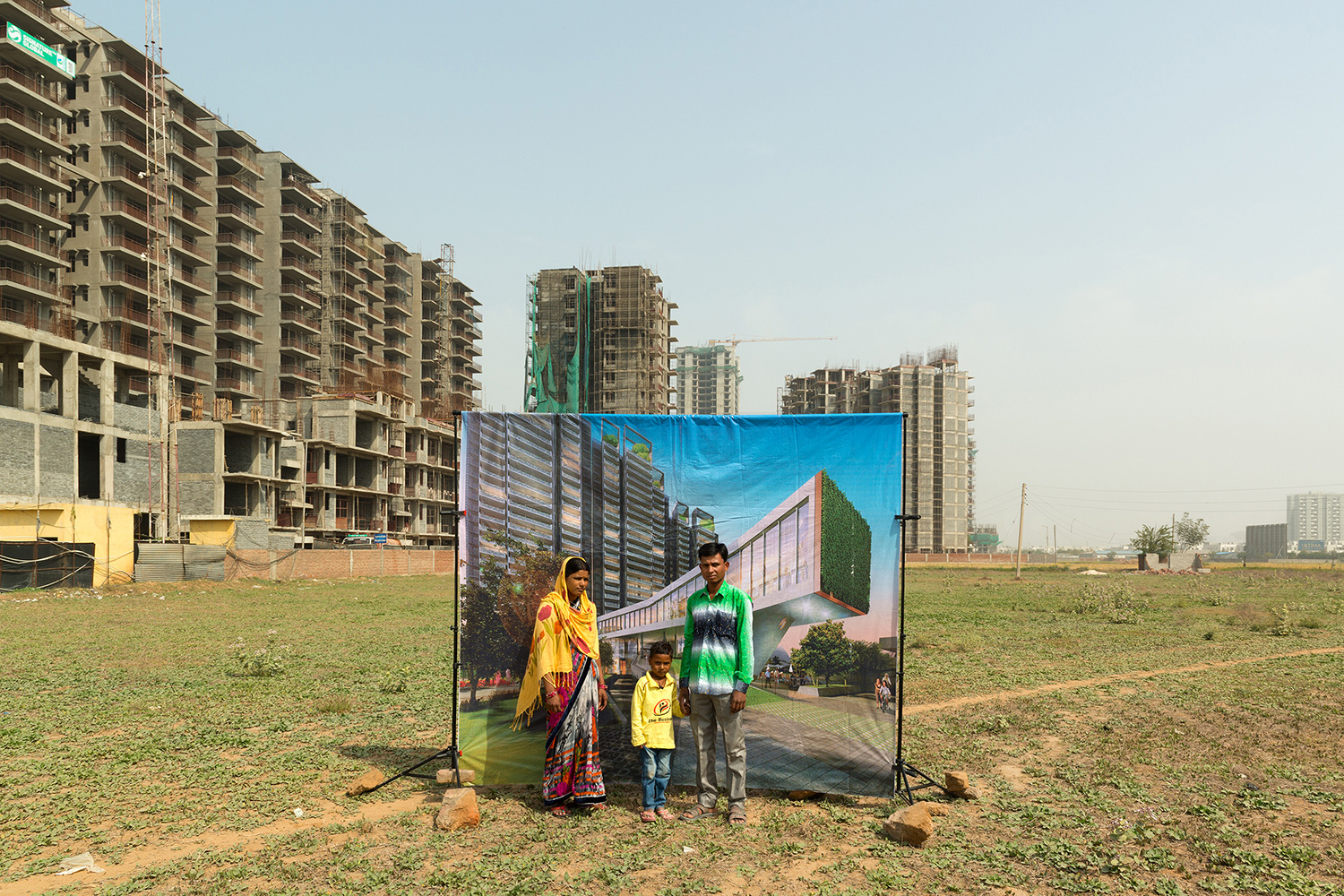
Bad City Dreams: A Rich District in a Poor Country
Arthur Crestani first came to India in 2010 for an exchange programme to study at the Jawaharlal Nehru University in Delhi. After that, he returned to Delhi a lot, for long stays each time. He did research on India’s urbanization when he was studying for his masters in 2011-2013. “I had the chance to read in detail how political and social processes were shaping India’s cities,” Crestani recalls.
His photo project, Bad City Dreams, is also dedicated to the themes of urbanization and social inequality. In it, Crestani steps away from the usual picture that’s been promoted by first world photographers since the times of Steve McCurry. No Holi holidays, close-up portraits, or bright exotic images. Instead — the ruthless development of the cities, advertising with pictures of facades, and people who will never be able to afford to live in those buildings.

Photographer, born in Paris. Published his work in the British Journal of Photography, The Guardian, Papier Magazine, Hindustan Times. Exhibited his work in France and China.
— This project was conducted in the first months of 2017. The idea was to appropriate the Indian tradition of portrait photography, using illustrated backgrounds and inviting people to pose before the camera, to question the visual making of contemporary Indian cities. The visual is paramount in this new urban form, as local governments and real-estate developers push forward the idea of making “global” cities with “world-class” amenities.
But whereas hand-painted backgrounds depicting dreamy landscapes were traditionally used by portrait photographers, I instead blew up artists’ impressions from glossy real-estate brochures. I visited various ‘property shows’, as they are called, where I met developers and real-estate agents. I collected glossy brochures from them. I then digitized the images I found the most interesting. And rather than working in a studio, I chose to shoot in the fast-changing landscapes of Gurgaon, a city 20 km South of Delhi, where lax regulation and a massive influx of cash have transformed an anonymous village into the city of 2 million people today viewed as a model for contemporary India.




The people I photographed are those you encounter in the open spaces of Gurgaon. They’re construction workers, migrant laborers, peasants whose village has been engulfed by urban sprawl. I met them on the spot. Whoever was passing around or stopping to watch was invited to pose. I chose to photograph them because they are ignored by the chest-thumping discourses of modernization and development, yet are an integral part of a city that would not grow or work without this cheap workforce.
India’s urbanization is radically changing the way people see the country. It was long depicted as a quintessentially ‘exotic’ place. India is now regarded as an emerging superpower, a discourse Indian politicians are very keen to appropriate. Bad City Dreams intends to challenge these representations and show that modernity is an image and a facade, which is constructed with many layers.






New and best




